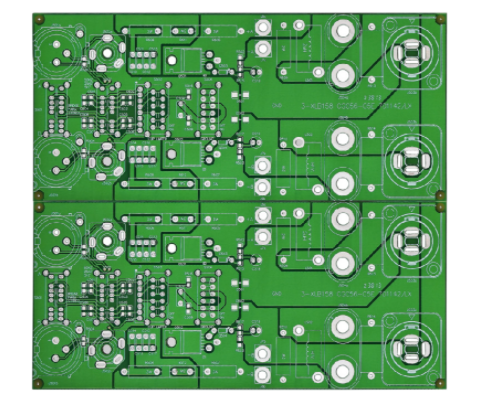Quality requirements for circuit board soldering
The two major American electronic and electrical industry associations (IPC and EIA) first jointly published various specifications related to assembly and welding in April 1992. The number No. 1 is the specification of J-STD-001. For more than ten years, it has not only become the most popular quality acceptance specification in the electronic and electrical assembly industry in the United States, but it has also become a model for compliance by the global industry.
Nowadays, facing the major changes of global lead-free, J-STD-001, which is directly related to welding, must of course be revised to meet the urgent needs of many suppliers and buyers. After long-term revisions and voting by participants, 001D was finally officially listed on 2005.2. Because there are too many shortcomings of lead-free soldering, the general industry is reluctant to enter mass production too early. It has to wait until 2006.7 until it is illegal to continue to have lead before adopting lead-free soldering. Therefore, the accumulated amount in the new 001D version There is not enough mass production, presumably the E version will be launched as soon as possible in the near future.

1. Solder paste hole soldering and wave soldering
(1) Lead-free tin bone in-hole welding
The method of "plug-in" solder paste into the hole; is to first print the solder paste on the ring or part of the first board or the second board, and then insert the foot of the part, and use the process of SMT welding. At the same time, the pins of the jack are also welded firmly. To replace the original two-step processing method of first doing the socket wave soldering and then doing the board surface solder paste soldering. Its purpose is not to save labor. The main reason is that the solder SAC or SC used in lead-free wave soldering is too high and the heat is too high, which will cause great harm to PCBA processing plates and components, etc., and it is easy A lot of copper melted from the board surface, and the copper pollution in the tin pool continued to increase, which caused the melting point to continue to rise and the fluidity to be gradually insufficient, resulting in poor solderability and deterioration of solder joint strength.
However, this method of replacing lead-free wave soldering with solder paste in-hole fusion soldering is very new, and the experience is still in its infancy, and there is still great room for improvement on how to do the best.
1. The amount of tin attached comes from the printed solder paste.
2. The 25% empty area in the through hole that is not yet full of tin refers to both the assembly surface and the solder surface.
3. The solder paste can be printed in the ring and through holes on the assembly surface or the soldering surface.
(2) Lead-free wave soldering of through holes
J-STD-001 also regulates lead-free wave soldering in section 6.3, and in 6.3.2 it is more clearly pointed out that the tin material should be through hole 1007. The hole ring on the upper and lower sides must be covered with tin.
1. The tin dipped here can be processed by any method, including the solder paste printed into the hole.
2. The wave tin or solder paste tin applied to any board surface.
3. The 25% part of the through hole that is not yet full of tin material refers to the shortcomings of the first side or the second side.
4. The tin in the vertical hole of Class2 board can be less than 75%.
(3) Explanation of acceptance of insufficient tin filling in through holes of second-level boards
As pointed out in Table 4 above, when the through-hole lead-free wave soldering of Class2 board, the tin increase in the hole is less than 75%, the exceptions are:
When the through hole is intended to be connected to a large plane for heat dissipation, it can be accepted as long as the through hole is filled with tin to 50%. However, the proviso is that the soldering of the second side (welding surface) must complete a 360° complete interconnection (100%) for the soldering of the pin and the hole wall, and the surface of the ring should also be tinned 75%. And some conditions Still must comply with the user’s regulations
2. Curved foot wave soldering of single panel
The IPC specification rarely mentions the welding of single-sided non-plated through-holes, and the bend of the non-through-hole ring surface should be at least 45°, so that the strength of the solder joint after wave soldering will be better. And the third paragraph also has requirements for the shape of the bent-foot solder joints. It is required that the solder joints formed in the bent-foot area should still be clearly visible. This means that good soldering should not add too much tin. quantity. Otherwise, it will be sloppy water with insufficient fluidity, or even the amount of tin grabbed by the tin wave that is too fast in the cold welding.
Secondly, it talks about the bent pin specifications of single-face ring welding for SMT patch processing. The main principle is that the pin protruding outside the hole must not violate the minimum spacing of electrical insulation. Other specifications regarding the protruding length of the pins in NPTH are listed in Table 2. As for the acceptability of the amount of tin in each solder joint, it is listed in Table 4.
When there is a possibility of violating the minimum insulation distance, or the pins are deformed so that they protrude excessively after welding and may pierce the anti-static package, the protrusion of the pins should not exceed 2.5mm.
1. The amount of tin attached is from the amount of tin obtained in the soldering process.
2. It refers to any PCB board surface that the solder touches.